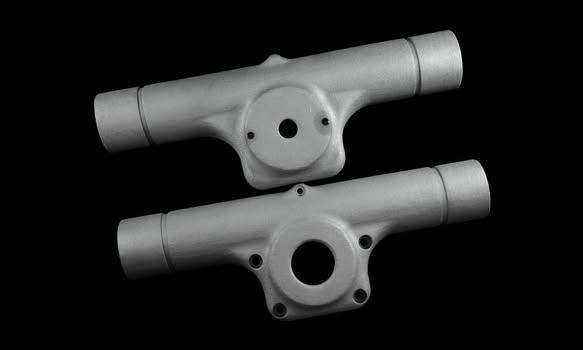Flow meters are important pieces of equipment used to measure the throughput of different elements and compounds in various industries. The choice of the type of apparatus relies upon the specific application, fluid characteristics, and required accuracy. This blog will explore the various kind of flux meters, their working concepts, and the uses they’re perfect for.
Differential Pressure Meters
Differential pressure meters are one of the most common forms of drift gauges. They measure the throughput by way of creating a stress drop across an obstruction within the drift route, consisting of an orifice plate, venturi tube, or flow nozzle. The pressure drop is proportional to the square of the drift rate, and by measuring this drop, the throughput may be calculated.
Applications:
DP drift meters are broadly used in various industries, together with oil and gasoline, water treatment, and chemical processing. They are suitable for measuring the volume of movement of clean liquids and gases, particularly in high-stress structures.
Positive Displacement Meters
They measure the throughput by way of trapping a set quantity of fluid and then releasing it. The fluid drives the motion of mechanical components, which include gears or pistons, and the circulation rate is determined via counting the numerous instances in which these constituents are filled and emptied.
Applications:
PDs are best for measuring the drift of viscous fluids, including oils and syrups, in industries like food and beverage, the pharma sector, and petroleum. They offer high accuracy and aren’t suffering from adjustments in fluid viscosity.
Turbine Meters
They use a rotor positioned inside the drift move. As the fluid flows via the meter, it makes the rotor spin at a speed proportional to the drift rate. The rotational speed is then converted into a thorough measure using sensors.
Applications:
Turbine flow meters are usually used in industries which include aerospace, automotive, and water management. They are suitable for calculating the flow of low-viscosity elements.
Electromagnetic Meters
Electromagnetic (mag) float meters function based on Faraday’s law of electromagnetic induction. When a conductive fluid flows through a magnetic field, it generates a voltage proportional to the waft speed. This voltage is then measured to determine the throughput.
Applications:
Mags are widely used in water and waste treatment, processing of chemicals, and mining industries. They are perfect for computing the float of conductive fluids, which include water, acids, and slurries, and they can handle fluids with suspended solids.
Ultrasonic Meters
Ultrasonic float meters use sound waves to measure the flow speed. There are two types: transit-time and Doppler. The former measure the time difference between ultrasonic pulses travelling up and downstream. The latter, alternatively, guage the frequency shift of the sound waves reflected by the particles within the fluid.
Applications:
Ultrasonic glide meters are suitable for a wide variety of packages, including water and wastewater management, oil and fuel, and chemical processing. They are best for measuring the float of clean and dirty fluids, in addition to those with suspended solids.
Coriolis Meters
Coriolis drift meters measure the mass flow charge of a fluid primarily based on the Coriolis impact. As the fluid flows via a vibrating tube, it causes a section shift proportional to the mass waft rate. This phase shift is determined and used to calculate the drift speed.
Applications:
These devices are used in sectors including pharma industries, chemicals, and others. They offer rather correct measurements of mass drift and are appropriate for measuring a huge range of fluids, together with drinks, gases, and slurries.
Vortex Flow Meters
They measure the float rate by way of detecting the vortices shed with the aid of a bluff body placed in the float circulation. The frequency of the vortices is proportional to the float velocity, and this frequency is measured to decide the throughput.
Applications:
Vortex devices are generally used in the oil and gasoline, chemical, and power technology industries. They are appropriate for measuring the drift of liquids, gases, and steam.
Thermal Mass Flow Meters
Thermal mass float meters measure the throughput based on the principle of heat transfer. They use a heated element and gauge the rate at which heat is dissipated through the flowing fluid. This price is proportional to the mass flow charge of the fluid.
Applications:
Thermal mass flow meters are perfect for measuring the flow of gases in applications which include HVAC, semiconductor production, and environmental tracking. They offer high accuracy and are appropriate for low throughput.
Conclusion
Flow meters are crucial equipment for correctly measuring the throughput of fluids in diverse industries. Choosing the right kind of float meter relies upon the particular utility, fluid characteristics, and required accuracy. Differential pressure, positive displacement, turbine, electromagnetic, ultrasonic, Coriolis, vortex, thermal mass, rotameters, and variable flow meters each have particular features and applications. Understanding these differences allows you to decide on the appropriate flow meter for your needs, ensuring efficient and accurate float dimensions.
For the ones looking to put into effect flux meters of their operations, consulting with experts and thinking about factors along with fluid type, flow velocity, and installation requirements can appreciably enhance the accuracy and reliability of waft measurements. Whether you’re within the oil and gas enterprise, water treatment, pharmaceuticals, or any other field, the right glide meter could make an immense difference in your operational performance and standards fulfilment. By making sure you choose the right device for the functioning of your enterprise needs you make the best investment for success.

As the editor of the blog, She curate insightful content that sparks curiosity and fosters learning. With a passion for storytelling and a keen eye for detail, she strive to bring diverse perspectives and engaging narratives to readers, ensuring every piece informs, inspires, and enriches.










